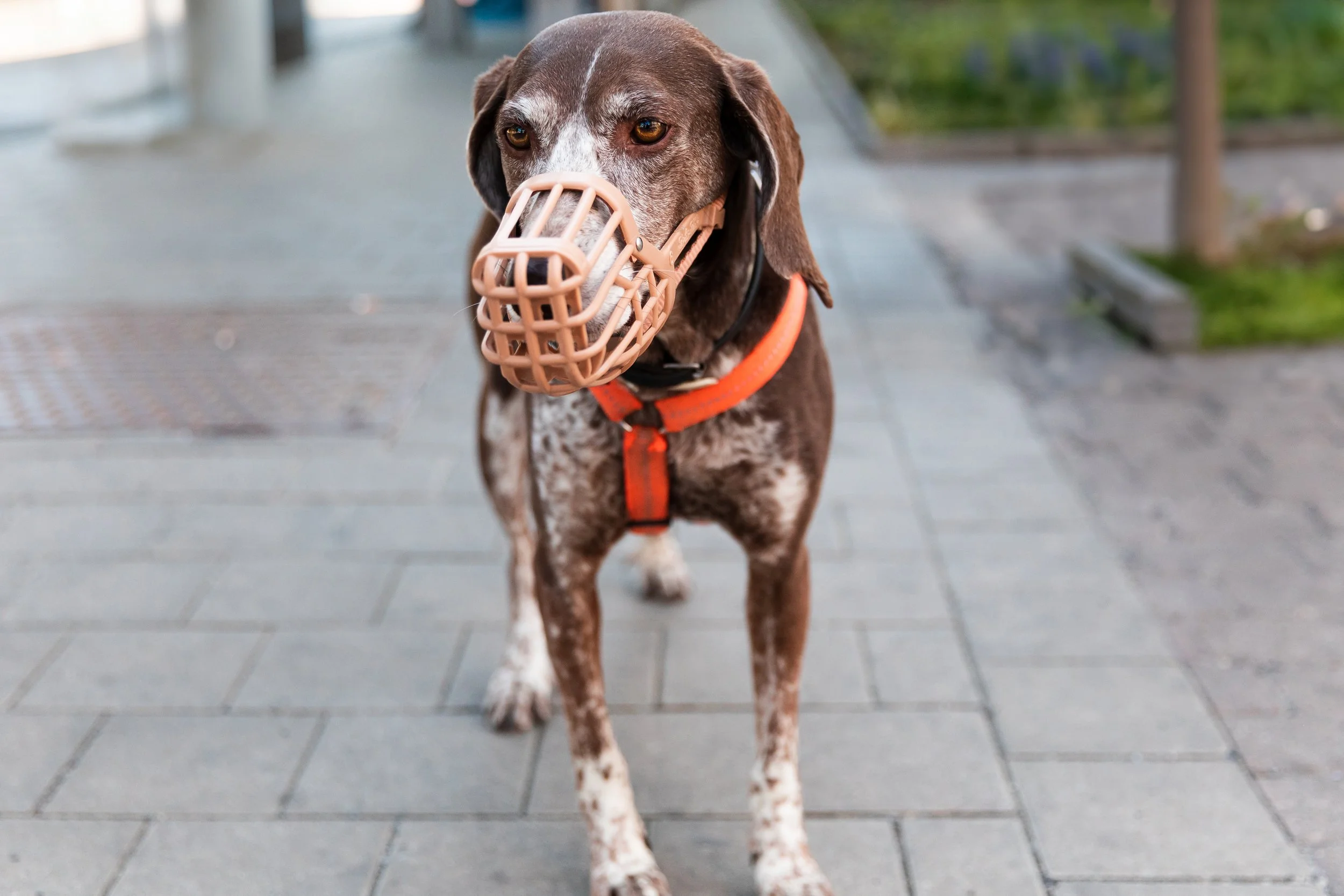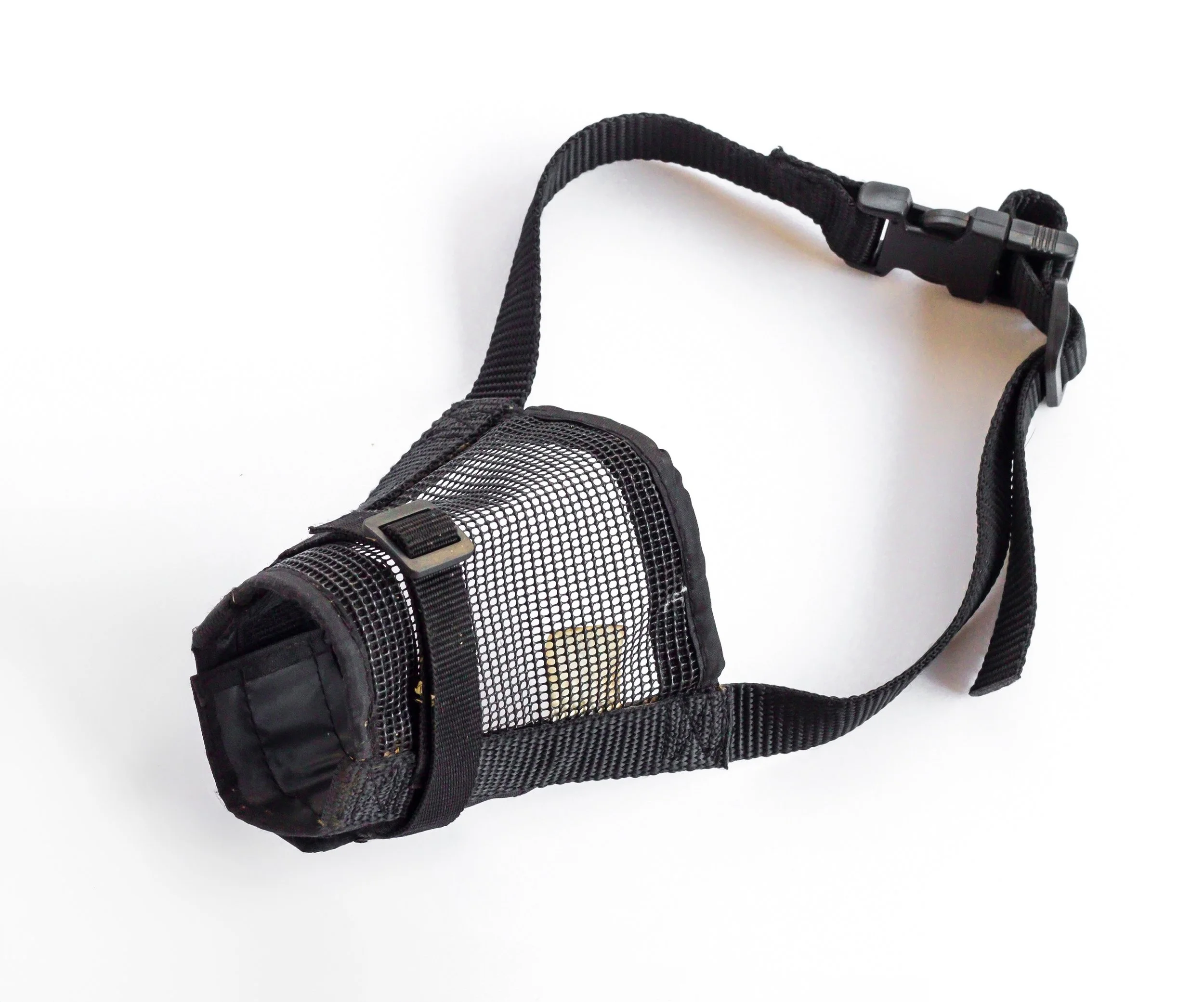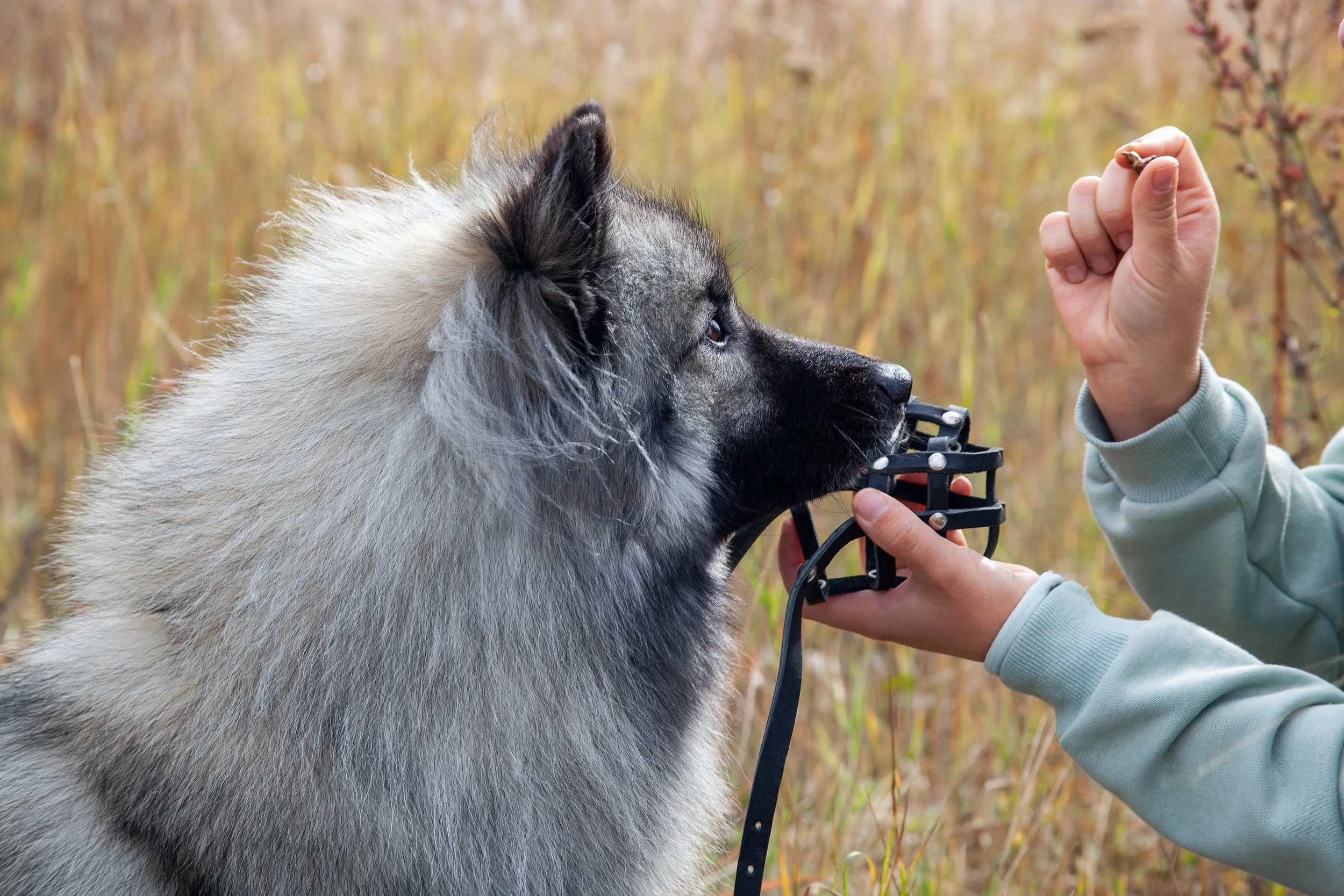The Muzzle-Another Tool for Your Emergency Preparedness Kit
Having just gone through a fairly lengthy power outage, we found ourselves thinking about emergency preparedness--or lack thereof in our case. Our discussions extended beyond the actual situation we found ourselves in to other areas of our life, especially our life with our dogs. I've thought about muzzle training for some time, but haven't acted upon it. As I began to look at resources to get started, I decided to write a blog that explores why, when and how we might want to condition our dogs to a muzzle, hoping to help other dog owners.
Dispelling Myths and Misconceptions
You might be thinking, "Why would my sweet Welshie or Shorthair (sub in your sweet dog/breed) ever need a muzzle?" The reality is, many people think about a muzzle as a last-resort tool for aggressive dogs with a high risk of biting behaviour. Our breeds--German Shorthaired Pointers and Welsh Springer Spaniels--are not known to have aggressive temperaments and in fact according to their breed standards, the Welsh should display "…a loyal and affectionate disposition" (WSSCA) and the Shorthair is "…friendly, intelligent and willing to please" (GSPCA). So why bother conditioning them to a muzzle?
Let's break down the stigma associated with muzzles. As mentioned, a common misconception is that a muzzle is inherently a tool for punishment or that its use is an admission of your dog’s aggressive tendencies. In reality, muzzle training is an act of foresight and responsible dog ownership. It’s comparable to teaching your child to buckle up in a car; you don't do this because you expect an accident, but because you know safety comes first. Many modern muzzles are made of lightweight, breathable materials and are engineered to allow the dog to pant, drink, and take treats. With proper training, most dogs adapt quickly, and the muzzle becomes just an occasional added part of their routine. This shift in perspective—from a tool of last resort to a proactive safety measure—can change the way we approach our dog's well-being.
The Goal: Increasing Safety and Reducing Stress
Even the most well-behaved dog when placed in a stressful or painful situation can exhibit defensive and in some cases, aggressive behaviour. Numerous studies have demonstrated this link between fear, anxiety, and aggressive behavior in dogs. For instance, a 2021 study conducted by researchers at the University of Helsinki analyzed data from approximately 9,000 dogs and found that fearfulness significantly increased the likelihood of aggressive behavior towards humans. The study concluded that fearful dogs were many times more prone to aggression, highlighting the importance of addressing fearfulness to prevent aggressive incidents (Mikkola et al). Additionally, a 1997 study titled "Fear-Motivated Aggression in Dogs: Patient Characteristics, Diagnosis and Therapy" examined cases of fear-induced aggression. The researchers observed that “…dogs displaying fear-motivated aggression often exhibited behaviors such as growling, snapping, and biting, particularly when approached or touched…" (Galac and Knoll). These studies underscore the complex relationship between fear, anxiety, and aggression in dogs, and why having a plan to effectively improve safety for both human(s) and dog(s) in heightened stress-inducing situations, is important.
“In reality, muzzle training is an act of foresight and responsible dog ownership. It’s comparable to teaching your child to buckle up in a car; you don’t do this because you expect an accident, but because you know that safety comes first.”
Specific, Possible Situations to Keep in Mind
Fortunately, we work with a wonderful veterinary team who strive to provide their client dogs with a good experience during appointments. A trip to the veterinarian, particularly if the dog has been well socialized to have a benign or positive experience during routine, annual appointments is usually fine and has no negative outcome for either humans or the dog. However, if a dog has a serious injury or falls ill with significant pain and discomfort, a trip to the vet no matter how positive previous experiences have been can be extremely stressful and cause a dog to become frightened. COVID is a good example of how our dogs (and their humans) had to change up routines. We were required to wait outside while our dogs were taken into the clinic for their care. Most of our dogs did just fine with this, but a few were worried about leaving us outside. Understandably, some dogs with heightened fear responses under COVID conditions may have benefited from being conditioned to a muzzle, bringing comfort to the dogs, veterinary team and owners.
Similarly, emergencies happen when you least expect them. Whether it’s an accident, natural disaster, or sudden illness, having your dog comfortable with a muzzle can make a significant difference. When a swift response is critical first responders or animal care professionals might need to handle your dog quickly and safely and they may use a muzzle as a matter of protocol for safety reasons. A dog that is already accustomed to a muzzle will be less likely to become combative or frightened, ensuring that prompt medical attention is provided without additional risk of injury. Similarly, many emergency shelters and transport services require dogs to be muzzled as a standard safety precaution. Muzzle training ahead of time can therefore facilitate a smoother transition in stressful moments. Knowing that your dog is comfortable with a muzzle offers an extra layer of preparedness that can be vital during crises.
Sizing & Types of Muzzles
According to the Cornell University College of Veterinary Medicine's DogWatch newsletter, the type of muzzle you choose for your dog, depends on the specific details of the situation.
Basket
Basket muzzles are structured as a hard plastic or metal basket that fits around the dog's snout and secured with straps around the dog's head. Dogs eat, drink and take treats normally using this type of muzzle.
Soft
A soft muzzle is made of fabric that fits snuggly around the snout. It does restrict some panting and drinking, but many are adjustable to find the perfect fit for the dog.
Makeshift
Sometimes in an emergency situation when a muzzle isn't handy, a "makeshift" muzzle can be used. Gauze, a leash, piece of fabric, rope etc. may be an option. Wrapping the material around the snout, ensuring the dog can still pant, may help in an acute, sudden emergency, but just for a very short time to move quickly from point A to point B. Note that the dog in the photo looks frightened, which may be in part caused by the makeshift muzzle (it’s a stock photo so no way to know for sure). To reduce your dog's stress if such a situation occurs, condition your dog using high-value rewards to accept a makeshift muzzle while in a low stress environment to help to reduce their stress in a real emergency.
Within the context of this article, the type of muzzle you choose is not as specific as someone who has a high risk biting behaviour dog. The dogs we've bred and placed with our wonderful families are not likely to be in this type of situation, but more so we recommend this work for the purpose of preparing for an emergency.
A final note about choosing a muzzle--most muzzles are sized according to snout length. Before you purchase a muzzle, you might want to talk with your veterinarian and dog trainer on what they recommend. Some snout shapes will be better suited to one type of muzzle over another so seeking further professional advice based on your goal of training for an emergency is recommended.
The Training Process: Rewarding Calmness is Key
Successful muzzle training is similar to crate training in some ways. The approach should focus on building trust and value in an object (crate or muzzle) that provides a level of restraint. We reinforce our dogs' calm interaction with the object by providing food, play and/or calm verbal rewards.
Step 1
Start in a calm, distraction-free, relaxed environment. Allow your dog to sniff and explore the muzzle without pressure and reward any calm engagement with the muzzle using treats, praise, or play.
Step 2
If using a basket muzzle, spread something soft (e.g. natural peanut butter) on the inside of the muzzle. Offer high-value food through the muzzle so your dog opts to put their snout into the muzzle. If you have a release word, release your dog and reward for the release. Gradually, work up to gently placing the muzzle on your dog for very short periods, always ensuring that the experience is paired with high-value rewards through the muzzle (in addition to the soft food on the inside). At this point, we haven't secured the muzzle.
Step 3
Once your dog is comfortable with putting their snout in and out of the muzzle, offer food and secure the straps according to the specific muzzle you're using. As with other steps, use high value rewards and keep the duration your dog wears the muzzle short.
Step 4
As your dog becomes comfortable in their muzzle, gradually expand the environments in which they wear it. For example, while waiting for your appointment at your vet clinic, you may want to reward your dog as you "play" muzzle training for a few minutes.
Important Notes
Make sure to only progress to the next step when your dog is ready. If they're stressed, take a step back and move at your dog's pace.
As you expand your training, you may have to back track if your dog regresses in their comfort and confidence. Go back to steps one and two in the new environment until your dog is ready to progress.
While you aren't going to have the muzzle on your dog at all times, the training and socialization process to help build your dog's comfort and confidence while wearing it in a variety of settings is important because it ensures your dog doesn't associate the muzzle with high stress, scary situations.
This step-by-step approach not only reduces any anxiety your dog might feel about wearing a muzzle but also reinforces the idea that the muzzle is nothing to fear and in fact comes with perks! This process builds trust and creates a positive association with something that might otherwise be seen as restrictive.
Conclusion
Muzzle training, when done correctly and with positive reinforcement, is far more than a tool for managing aggressive behavior. It is a versatile safety measure that prepares your dog for emergency situations, acute veterinary visits and even some every day encounters. This practice builds confidence in both dog and the owner, fostering a safe environment wherever life may lead. By dispelling the myths surrounding muzzles and embracing them as part of a comprehensive safety plan, dog owners can ensure that their dogs are well-prepared for unexpected challenges. A little time and training now can translate into significant benefits later, making muzzle training a smart, compassionate, and responsible practice for any dog, regardless of its temperament.
References
GSPCA. "Breed Standard - GSPCA." GSPCA, 1 Jan. 2023, www.gspca.org/breed/standard.
Galac, S, and B W Knol. “Fear-Motivated Aggression in Dogs: Patient Characteristics, Diagnosis and Therapy.” Animal Welfare 6.1 (1997): 9–15. Web.
Mikkola, Salla, et al. “Aggressive Behaviour Is Affected by Demographic, Environmental and Behavioural Factors in Purebred Dogs.” Scientific Reports, vol. 11, no. 1, May 2021, https://doi.org/10.1038/s41598-021-88793-5.
“Muzzle Choices.” Cornell University College of Veterinary Medicine, www.vet.cornell.edu/departments-centers-and-institutes/riney-canine-health-center/canine-health-information/muzzle-choices.
Vester, Jessica Ellen. “Physiological And Behavioral Stress-Induced Responses Of Dogs During Veterinary Examinations.” Digital Commons @ SPU, www.digitalcommons.spu.edu/honorsprojects/186.
Warner, Scott G. “Increased Incidence of Domestic Animal Bites Following a Disaster Due to Natural Hazards.” Prehospital and Disaster Medicine 25.2 (2010): 187–190. Web.
WSSCA. “Breed Standard - WSSCA.” WSSCA, 29 Dec. 2023, www.welshspringerspanielclubofamerica.org/the-welsh-springer/breed-standard.





